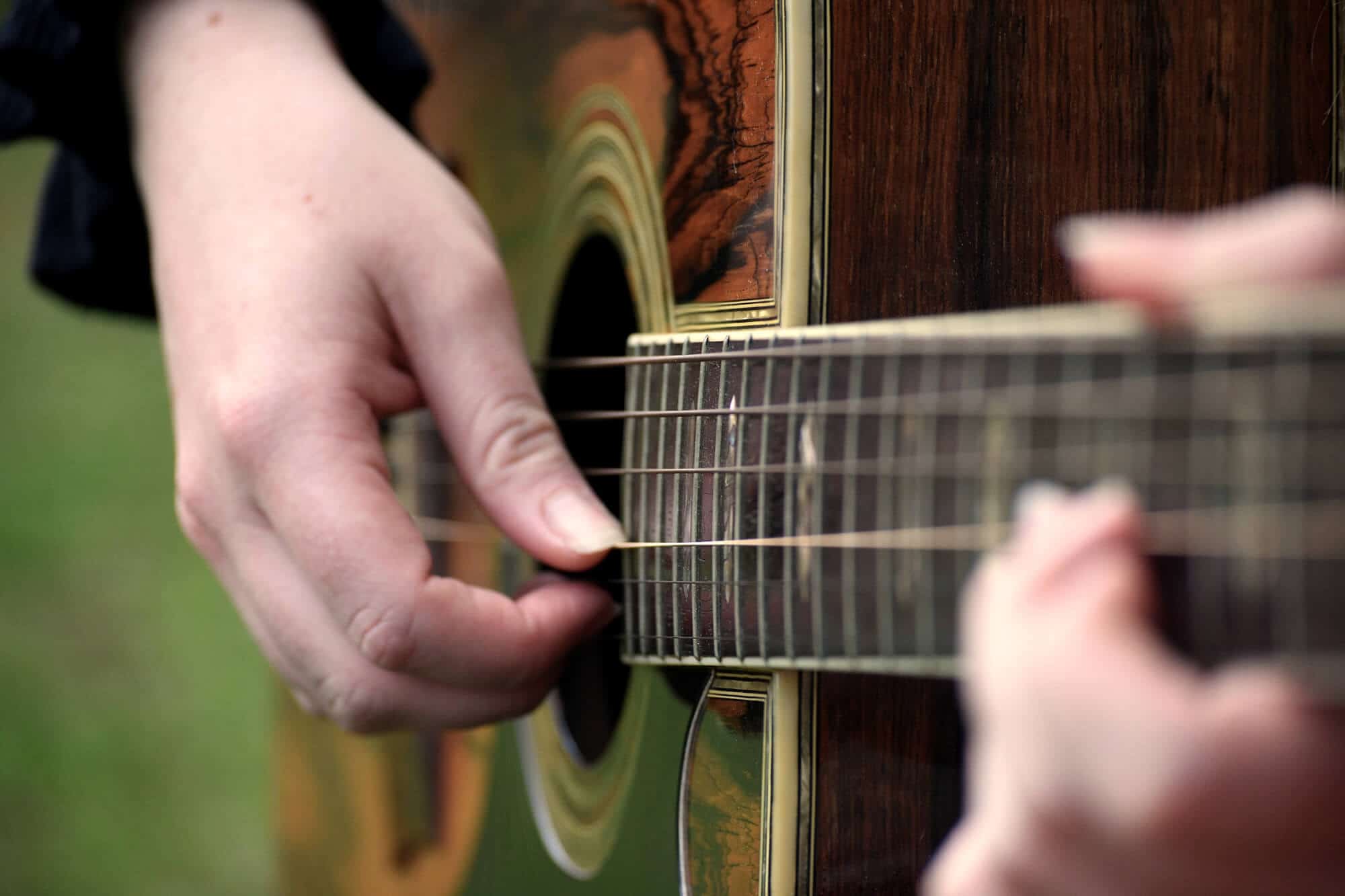Classical guitar might seem intimidating for someone who has only played a steel-string acoustic or electric guitar before. You might have already heard that classical guitarists have long nails.
But do you really need to grow fingernails? Can you play classical guitar without nails?
The short answer is – Yes. You don’t have to grow fingernails in order to play classical guitar. But there’s a reason why most classical guitarists always play with nails.
Now let’s get into the debate.
Do You Need Nails for Classical Guitar?
I have played classical guitar, and even blues, improvisational jazz and acoustic fingerstyle with and without nails. Let me tell you both the advantages and disadvantages of playing without nails.
Classical guitar and the hand position is such that it requires you to hit the strings at an angle. Classical guitarists spend a lot of time getting the perfect shape and length of their nails to get the most of the technique. Now if you really want to play classical pieces (or Flamenco), nails will allow the sound to project more and you have much more control on the overall tonal quality.
Using fingernails, you can produce a variety of sounds and have a greater dynamic range (volume variation). This gives more character and a nice crisp sound to you classical playing. You can choose to keep them short but I suggest keeping nails to get the most out of the guitar.
Now if you don’t have fingernails, the first noticeable change is the softer and warmer tone of the flesh. You will have to play with greater force if you want the same volume out of the guitar. Although it’s totally possible to get a good tone without nails, it won’t be as bright or polished as with them.
But don’t let that stop you. Here’s a video of Rob McKillop demonstrating his classical guitar technique without nails.
In short, you don’t NEED nails for classical guitar, but it depends.
In loud settings where you need sound to project to the back of the room and are not using any amplification, nails are required because your fingertips might get sore otherwise.
On the other hand, if you just want to play in your living room or don’t want to sign up for regular nail maintenance, you don’t have to grow them.
Are There Any Benefits of Playing Classical Guitar Without Nails?
The obvious upside of not using nails is that you don’t have to constantly worry about cleaning, polishing or grooming them. Longer nails will get dirty pretty quickly and are very prone to chipping or developing nicks near the tip, which will ruin the tone.
If you play any other instruments like piano, lutes or bass guitar, you know nails are an obstacle to those. So you can quickly go back and forth between those instruments without having nails get in your way.
Also, since you naturally get a softer attack and mellow tone without nails, you can be creative with your sound and get darker or warmer tones. Playing without nails is usually harder in terms of getting the same tone and articulation, which means you’ll develop a solid technique if you keep at it.
The History of No Nail Playing: From Sor to MacKillop
You might think that playing classical guitar with nails is the norm and has always been so. But that’s not true!
In fact, some of the most influential classical guitarists in history played without nails or with very short nails:
- Fernando Sor (1778-1839): The father of classical guitar, played with the flesh of his fingertips, preferred a more expressive and nuanced sound than nails.
- Francisco Tárrega (1852-1909): The founder of the modern classical guitar school, played with nails until 1904, then cut them off and promoted playing without them, preferred a softer, warmer, and more mellow sound.
- Andrés Segovia (1893-1987): Made the use of nails more popular and dominant in the 20th century, shaped the modern classical guitar repertoire and standards.
- Julian Bream (1933-2020): Experimented with both methods throughout his career, played without nails for some styles and pieces.
- Rob MacKillop (b. 1959): A prominent advocate for no nail playing today, recorded many albums and videos of classical guitar music played without nails, demonstrated the beauty and diversity of the no nail sound.
- Brandon Acker (b. 1988): A modern player who plays without nails, made many videos on classical guitar history and technique, performed many pieces and styles with no nail playing.
How Long Should my Nails be for Classical Guitar?
Classical guitarists grow nails on their Thumb (P), Index (I), Middle (M), and Ring finger (A). Of course, the ideal length and shape will be subject to your comfort, hand position, and what you need from it. Sometimes, it can take years of trial and error as you develop your technique and skills.
There is no fixed length for everyone. However, the methods used for polishing and shaping can still be applied to any nail. Most people use a good nail file, sandpaper, and polishing paper to give them the perfect finish.
While the length is always a very personal thing, if you are new to it then you can start with 2mm past the fingertip for the I, M, and A fingers and 5mm for the Thumb (P). With time, you’ll experiment with different nail profiles and find the one that’s best for you.
If you want to learn more about fingernails and classical guitar, I highly recommend checking out this guide on Fingernail Lesson for Classical Guitar by Bradford Werner from “This is Classical Guitar.”
Conclusion
Having fingernails gives you a boost in volume and a richer tone out of your classical guitar. This is the reason why you always see classical guitarists with well-maintained nails.
On the other hand, some people find nails to be uncomfortable and I can understand that. Also, if you shorten or reshape them, oftentimes you’ll need to recalibrate your technique which is time-taking and not always fun.
Whether you choose to play the classical guitar with or without nails, or heck even with a pick, you won’t be less amazed by this beautiful instrument. The great part about fingernails is that if you don’t want to use nails now, you can always grow them later.

I’m Pranshu. I’ve been a passionate guitarist, keyboardist, and music producer ever since I got my hands on a keyboard as a small child.
With Harmonyvine, my goal is to share tips and knowledge about music and gear with you. I also enjoy recording music and guitar covers, which you can check out on my Instagram page.

